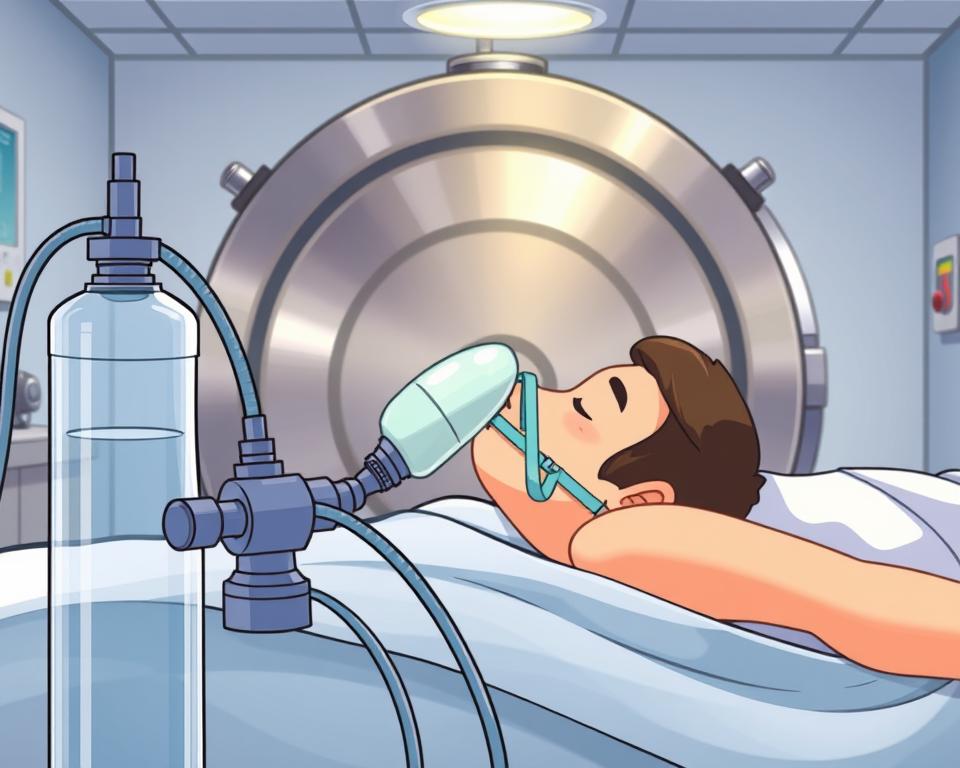Foundational Concepts of Chiropractic Wellness: What You Need to Understand
Tired of masking symptoms instead of addressing the root causes of your health problems? Chiropractic care presents a unique wellness approach that could change how you view healthcare.
Chiropractic practice centers on the intricate relationship between bodily structure—particularly the spine—and overall function. Where conventional medicine typically seeks symptom relief, chiropractic care strives to improve your body’s innate healing capabilities using chiropractor Duluth Mn.
At its heart, chiropractic care holds that correct spinal alignment is vital for a well-functioning nervous system. Chiropractors concentrate on the musculoskeletal system to enhance your body’s natural health and balance.
Delving into chiropractic care uncovers a holistic strategy that goes beyond mere pain reduction. Through precise, targeted adjustments, it empowers your body to achieve optimal performance.
Essential Insights

- Chiropractic emphasizes total-body health
- Proper spine positioning is crucial for nerve system function
- Therapy targets underlying issues rather than superficial symptoms
- Promoting the body’s self-healing is central to chiropractic
- Personalized approach to individual health needs
Understanding the Primary Premises of Chiropractic Care
Chiropractic offers a unique health paradigm, distinct from standard medical treatments. It revolves around how the body’s structure—especially the spine—affects its overall function.
Chiropractic theory is built on the notion of subluxation. It describes spinal misalignments that impede inherent healing mechanisms. Chiropractors posit that these minor misalignments can affect your nervous system and overall health.
Fundamental Treatment Philosophy
Chiropractic care’s primary philosophy is rooted in a holistic health approach. It seeks to address the underlying causes of physical discomfort, not just the symptoms. This method involves:
- Identifying structural imbalances in the body
- Reestablishing correct alignment via targeted adjustments
- Promoting natural healing mechanisms
Spinal Manipulation and Health
Spinal manipulation is the cornerstone of chiropractic treatment. It uses precise force on targeted spinal areas to:
- Improve joint mobility
- Reduce nerve irritation
- Enhance overall body function
Wellness Beyond Symptoms
Chiropractors view health as more than the absence of disease. Their holistic approach considers your entire physical and emotional well-being. They recognize that optimal health requires a balanced, integrated system.
Scientific Basis of Chiropractic Adjustments
Chiropractic manipulations are exacting methods designed to fix vertebral misalignments and joint issues. These treatments involve targeted manual manipulations. They help restore your body’s musculoskeletal system to its proper alignment and function.
In a session, practitioners apply specialized methods to loosen limited-mobility regions. Their main objectives are:
- Easing discomfort and muscular tightness
- Increasing joint flexibility
- Reestablishing effective nerve signaling
- Supporting the body’s natural healing processes
Spinal biomechanics aim to detect and rectify minor joint malfunctions. They exert measured, accurate force. It realigns vertebrae displaced by:
- Suboptimal posture
- Repetitive stress
- Physical injuries
- Sedentary lifestyle patterns
Contemporary studies validate the efficacy of Kenwood chiropractic manipulations. Neurological studies show these treatments can positively affect nerve system function. They may reduce inflammation and promote overall wellness.
Your body’s interconnected systems respond dynamically to these precise interventions. Chiropractic offers a focused strategy for musculoskeletal concerns.
Typical Conditions Managed by Chiropractic
Chiropractic provides an all-encompassing method for addressing musculoskeletal ailments and fostering self-healing. It focuses on your body’s innate ability to heal itself. It alleviates various painful issues without drugs or surgery.
Musculoskeletal Disorders Explained
Musculoskeletal disorders can greatly affect your daily life, causing discomfort and limiting mobility. Chiropractic specialists excel in identifying and remedying such issues. They use targeted interventions to address the root cause of pain.
- Arthritic pain and rigidity
- Muscle tension and weakness
- Chronic inflammatory conditions
- Repetitive strain injuries
Managing Back and Neck Pain
Back and neck pain are common reasons for seeking chiropractic care. A customized care plan is developed for you. This plan focuses on spinal alignment, muscle rehabilitation, and natural healing techniques.
Treating Headaches with Chiropractic
Persistent headaches frequently stem from cervical and spinal dysfunctions. Chiropractic adjustments can offer significant relief. They address underlying structural problems and reduce nerve interference.
Opting for chiropractic care embraces a whole-body perspective. It supports your body’s natural healing processes. Thus, you restore maximum wellness and movement.
Your Initial Chiropractic Appointment
Your first chiropractic appointment is a detailed health assessment. It’s designed to identify your concerns and tailor a care plan. This foundational session kick-starts your complementary health journey.
In the consult, your chiropractor performs an in-depth assessment. This includes:
- Comprehensive medical history intake
- Comprehensive physical examination
- Possible diagnostic screenings
- Goal-setting conversation
The health history intake is vital. Your chiropractor will inquire about past injuries, current pain, lifestyle factors, and health conditions. This ensures a complete picture of your health status.
Diagnostic procedures might include:
- Vertebral positioning checks
- Range of motion tests
- Neurologic function tests
- Radiographs or advanced imaging
After the evaluation, your chiropractor will discuss possible treatments. This may include spinal adjustments, complementary therapy recommendations, and wellness strategies tailored to your health needs.
The Role of Chiropractors in Modern Healthcare
Chiropractic care has become a vital part of modern healthcare. It provides distinct paths for managing pain and promoting health. They deliver comprehensive care that complements conventional medicine.
The professional landscape of chiropractic care is built on rigorous standards and extensive training. Clinicians complete intensive training to guarantee safe, effective care.
Chiropractic Education Pathway
Becoming a chiropractor requires substantial academic and practical preparation:
- Four-year doctoral graduate program
- At least 4,200 hours of combined classroom, lab, and clinical study
- Curriculum comparable to medical and osteopathic schools
- In-depth learning in anatomy, physiology, and diagnostics
Collaborating with Conventional Care
Modern chiropractic care embraces a collaborative approach to healthcare. Chiropractors often work alongside medical doctors to provide complete patient treatment. This synergy connects complementary and conventional therapies.
Professional Standards and Licensing
Strict professional standards ensure the quality and safety of chiropractic care. Chiropractors are required to:
- Pass national board exams
- Obtain state-specific licensing
- Participate in continuing education
- Adhere to ethical guidelines
By maintaining these rigorous standards, chiropractors show their dedication to providing safe, effective, and professional healthcare services to patients.
Advantages and Outcomes of Chiropractic Care
Chiropractic offers multiple perks for enthusiasts of natural therapy. Its emphasis lies on whole-body health and addressing pain origins. Individuals often report significant health gains following precise spinal manipulations.
Statistical evidence highlights the significant impact of chiropractic treatments. Research reveals that:
- 77% of patients find chiropractic care very effective
- They report reduced pain and enhanced mobility
- The treatment aids the body’s natural healing processes
Central to chiropractic is leveraging the body’s self-healing capacity. Chiropractors aim to restore proper alignment. Such realignment may:
- Reduce inflammation
- Enhance neural communication
- Boost overall physical performance
Those dealing with chronic pain, sports injuries, or poor posture can find substantial relief. Chiropractic extends beyond symptom management. It aims for complete wellness and long-term health improvement.
Safety Considerations and Possible Risks
Chiropractic care is a valuable healthcare approach, but understanding its safety profile is key for patients. Though typically low-risk, awareness of adverse possibilities supports informed choices.
Evaluating spinal adjustment safety involves multiple considerations. Properly trained chiropractors reduce complication likelihood. This expertise safeguards patient well-being.
When Chiropractic Isn’t Advisable
Chiropractic may not suit every individual. Certain conditions may prevent you from receiving spinal manipulation:
- Severe osteoporosis
- Active inflammatory arthritides
- Cord impingement
- Spinal malignancies
- Current vertebral fractures
Potential Chiropractic Side Effects
Most experience only minor post-adjustment reactions. Common side effects include:
- Short-lived soreness
- Transient headaches
- Slight fatigue
- Temporary increase in pain before improvement
When to Seek Alternative Treatment
Should pain persist or odd symptoms arise post-adjustment, seek medical advice. Watch for:
- Severe or prolonged pain
- Numbness or tingling
- Pain spreading into limbs
- Continued motion limitation
Maintain transparent dialogue with your chiropractor regarding health background and worries. This fosters both safety and efficacy in your care.
Complementary Therapies and Treatment Approaches
Chiropractic care goes beyond just spinal adjustments. It involves a holistic approach, incorporating various therapies to support your overall wellness. These therapies aim to address specific health concerns.
Chiropractors use a range of treatment modalities to craft a personalized healing plan. These methods enhance your body’s natural healing abilities and offer targeted relief.
- Myofascial release for easing muscle tightness
- Tailored exercise and stretching regimens
- Joint bracing and Kinesio taping techniques
- Dietary guidance and nutrition planning
- Connections to complementary care experts
Therapies like massage, acupuncture, and other adjuncts may complement your adjustments. They synergize with spinal manipulations. They aim to promote overall health and address various wellness dimensions.
Exploring these diverse treatment approaches helps create a personalized healing strategy. It zeroes in on your specific health requirements. The goal is to harness self-healing and sustain peak performance via holistic care.
Evidence-Based Research Supporting Chiropractic Care
Growing evidence positions chiropractic as a potent natural therapy. Scientific studies have shown its effectiveness in treating various health issues and improving patient outcomes.
Key Clinical Findings
A wealth of clinical research supports chiropractic efficacy. Researchers have observed significant improvements in patient health through targeted spinal manipulations. Highlights include:
- Reduced pain intensity in musculoskeletal conditions
- Improved mobility and range of motion
- Enhanced neurological function
- Decreased reliance on pain medications
Chiropractic Patient Satisfaction
Patient polls indicate strong satisfaction with chiropractic care. One study showed it ranked above various therapies such as:
- Prescription medications
- Intensive massage therapy
- Yoga and Pilates
- OTC treatment methods
Sustained Benefits of Care
Chiropractic yields enduring health enhancements. Patients report long-lasting pain relief and enhanced overall wellness. By tackling origins over symptoms, it fosters superior long-term health.
By focusing on spinal alignment and nervous system function, chiropractic treatments enhance your body’s healing abilities. This drives top physical function and wellness.
In Closing
Chiropractic care is a powerful healthcare approach that goes beyond traditional medicine. It emphasizes innate recovery and source-based symptom resolution. Accomplished via accurate adjustments and comprehensive wellness plans.
Grasping these techniques can supercharge your path to peak health. Chiropractors offer personalized care that considers your body’s interconnected systems. The result: better movement, less pain, and greater wellness—with no drugs required.
Before starting care, always consult certified chiropractors. They’ll evaluate your unique condition. Customized plans guarantee the best possible results. Integrating chiropractic supports preventive health and natural recovery.
Healthcare is shifting, and chiropractic now plays a key patient-care role. Choosing to explore chiropractic may lead to profound health benefits. They foster sustained physical and neural well-being.


